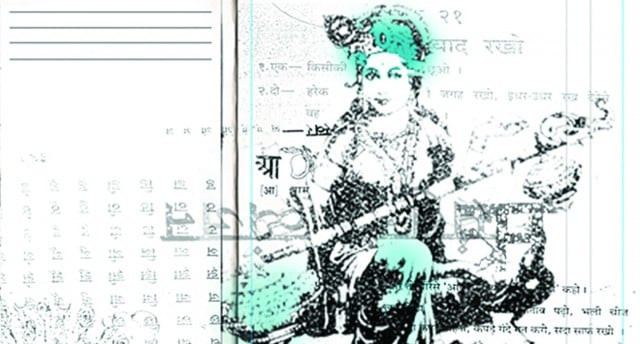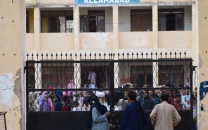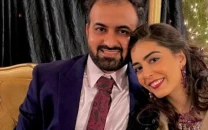Mini devis devote afternoons to keeping faith’s agni alive

“We don’t train men because our men are pakhandi (loose-charactered and spoilt),” explains 72-year-old Kaka Khushal Wasandani. He is the caretaker of the Nainuram Ashram whose mission is to keep the Hindu language and culture alive in the desert of Tharparkar. “The boys are not really concerned about their heritage. [But the girls] are our devis.”
At 3pm each day, after regular school and household chores, 100 young girls in white dupattas arrive at the ashram for their afternoon lessons in Hindi and cultural education. “We teach them about our culture and religious wisdom, morals and character - we teach them to lead a simple life,” says Kaka Khushal. “None of our girls talk loudly, eat paan chalia (betel leaf or quid) or apply make-up before they are married.”
Hindi language and culture is also taught in other parts of Sindh, such as Ghotki, but it is only in Islamkot that girls are taught exclusively. Kaka Khushal and his seven teachers believe that women are the torchbearers of their culture. When they finish their courses, the young women can fluently speak and write in Hindi, which is a marked departure from the Hindu men of the area who prefer to use Sindhi.
The large hall where the students take their lessons, is adorned with images of the saints and deities from the sacred Geeta. Racks of books in Hindi and with bhajans, japs, kathas and pooja paat, were ordered from India. They line the walls around a stage where the students regularly gather around a microphone to chant their mantras. On the upper level, nearly 30 older girls take sewing classes at the small vocational training centre.
The school’s current building was built in the memory of Saint Nand Lal Nandan, a saint who was a social worker and moral leader for the Hindu community in Thar. But the school has been around since 1979. “When I went to Ahmadabad, India, a young girl once approached me,” recalls Kaka Khushal. “I did not recognise her, but she told me that she was once a student at my centre and had settled in India after getting married.” He was flushed with pride that the knowledge she had gained at their small school had helped her negotiate her new life.
Today Kaka Khushal boasts that his students are perfect in Hindi. “They speak accurate Hindi, with the right pronunciation and word selection,” he claims.
But for many of the girls, it is not just the academics that keep them coming back each day, that too after regular school and housework. Thirteen-year-old Ujala Ramchand says she cherishes the love and attention that she receives at the school more than just learning the language. “I love all the teachers and my friends,” she gushes.
Priyanka Naresh 16, and Heera Ramchand, 15, help teach the bhajans to the kindergarten girls. “The youngest ones are the brightest students,” says Priyanka. “It takes them only a month to learn the first Hindi alphabet workbook.”
The school runs from kindergarten to grade VIII only because most Hindu girls from the area married at about 16 or 17 years of age. But this hardly matters because Kaka Khushal makes sure that they are well equipped for the rest of their lives to keep their language, culture and religion alive.
Published in The Express Tribune, July 3rd, 2010.



















COMMENTS
Comments are moderated and generally will be posted if they are on-topic and not abusive.
For more information, please see our Comments FAQ